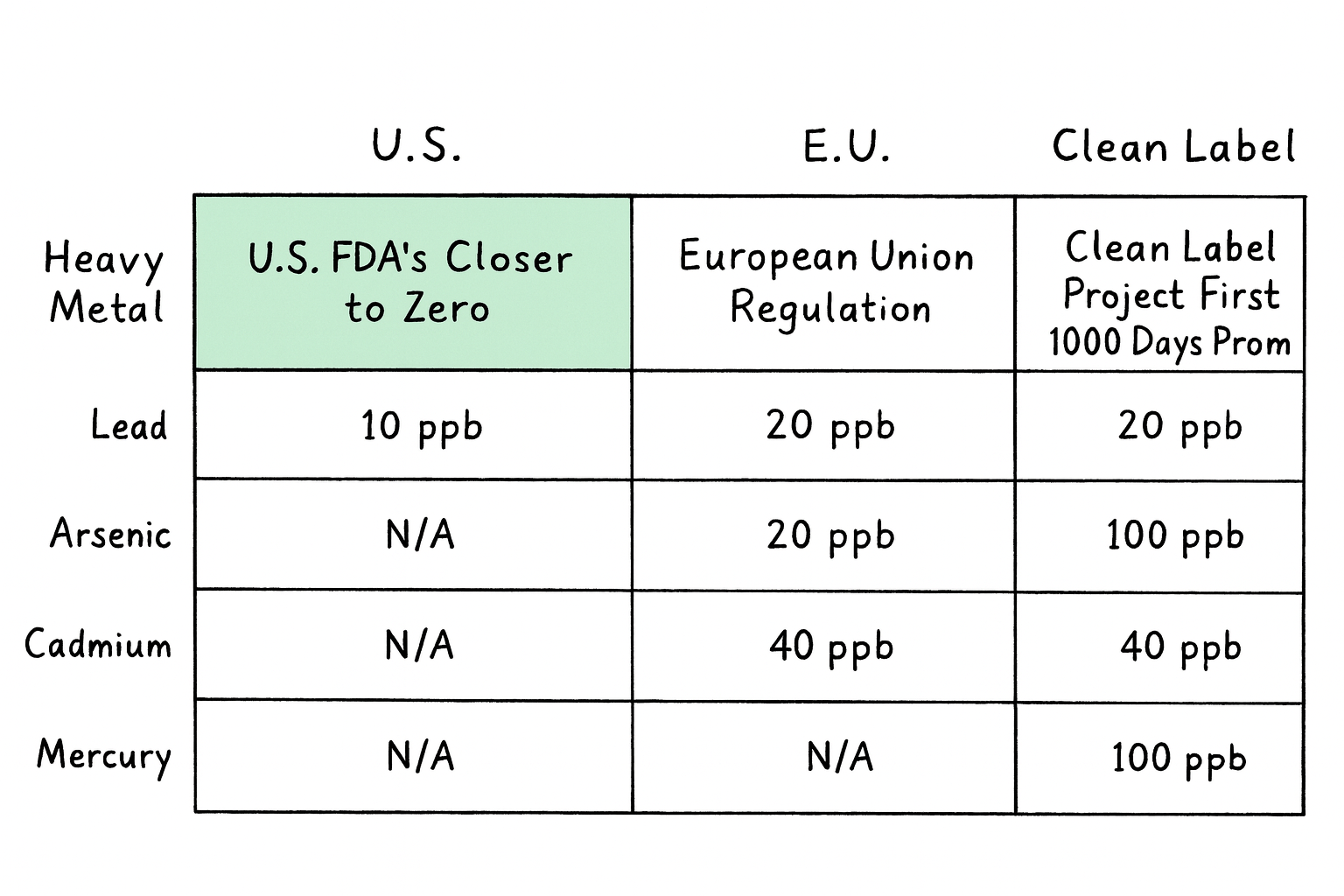
U.S. FDA Closer to Zero
The FDA has established action levels to reduce heavy metal exposure in baby food. For example, lead limits vary by food type, with a maximum of 10 ppb for fruits, vegetables, mixtures, yogurts, and meats, while root vegetables and dry infant cereals have a higher threshold of 20 ppb.
(Final Guidance for Industry, January 2025, U.S. Department of Health and Human Services FDA Center for Food Safety and Applied Nutrition.)
European Union Regulation
The EU enforces strict heavy metal limits for baby food and cereal-based products intended for infants up to 3 years old.
(Commission Regulation (EU) 2023/915, April 2023.)
Clean Label Project
This nonprofit organization independently evaluates baby food safety, emphasizing stricter limits for contaminants to promote transparency and purity.
-
Stricter Standards
At Sophie's Organics, we set strict internal limits for heavy metals and conduct extensive testing
-
Better Farming Practices
Reducing the use of contaminated water, rotating crops, and using clean soil can help limit heavy metal absorption
-
Transparency
Our four point testing approach provides parents and families with confidence in product safety. See below for testing results
View Test Results Here
Either type in the flavor or click on the available flavors below to see our heavy metal results
